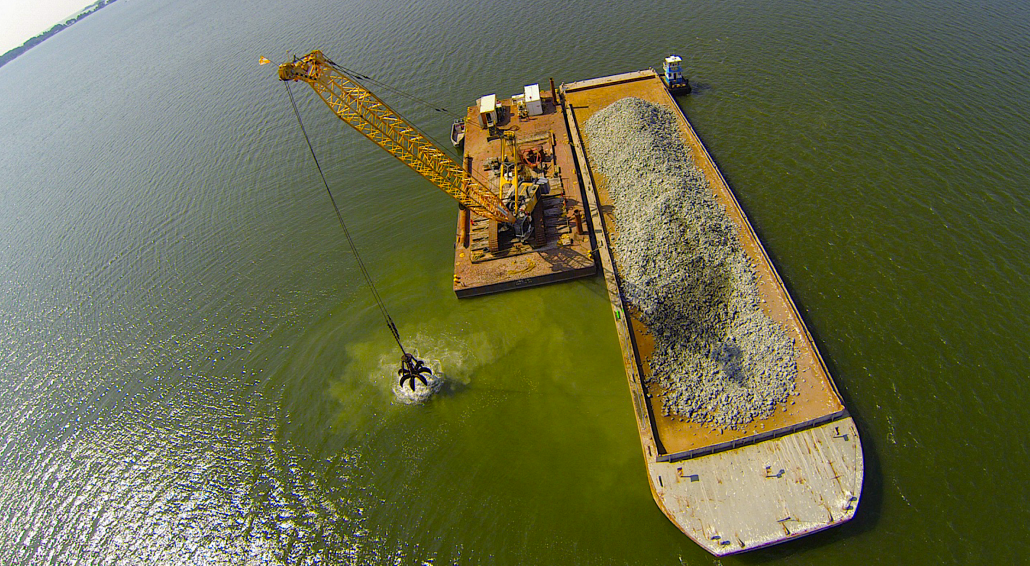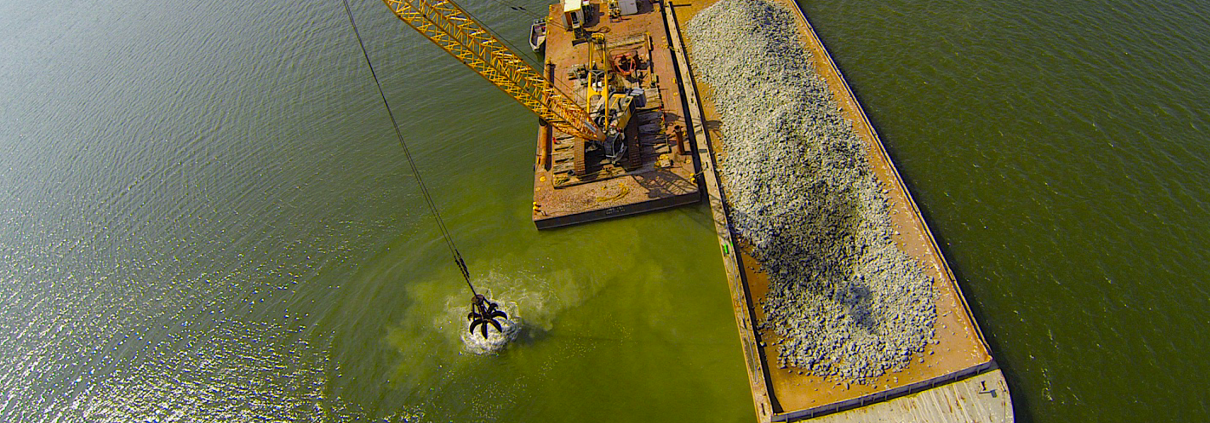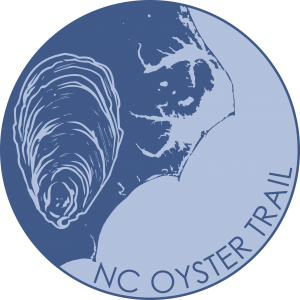What strategies help revive public oyster grounds?
By Mason Ibrahim on September 15, 2025 | Reprinted from Hook, Line and Science

Rotating harvests and replenishing shells help oyster reefs recover.
In May, the North Carolina Marine Fisheries Commission updated the state’s management plan for Eastern oysters, introducing openings for mechanical oyster harvest on a rotating basis on 10-acre “cultch” planting sites, as well as creating Deep-Water Oyster Recovery Areas that are closed to mechanical harvest. Cultch planting sites are carefully selected locations where materials like crushed oyster shells, limestone, or concrete give oyster larvae a hard surface on which to attach and grow, forming new reefs.
Recent research shows that rotation and reef enhancement can improve oyster populations, while still supporting fishing.
Research Need
Oysters in the Chesapeake Bay remain below their historic levels. The combination of disease, overharvesting, water pollution, and habitat loss led to record low harvest levels by the early 2000’s.
Efforts to restore oyster populations traditionally included construction of “no-take” sanctuaries, restoring reef habitat by adding shell or rock, and rearing and planting juvenile oysters in hatcheries. More recently, fishery managers use an oyster harvest rotation strategy, in which public fishing grounds are open to harvest and then closed for a few years before reopening.
Scientists have had a poor understanding of the comparative impact of these conservation practices on oyster populations, particularly on harvested reefs.
What Did They Study?
Researchers studied oyster reefs in the Rappahannock River, Virginia. Since 2007, six harvest areas have been managed on a three-year rotation. In addition, since 2000, many reefs have received regular shell plantings, and some reefs also were closed permanently as sanctuaries. Combined with data from 20 years of biological monitoring, these reefs therefore served as a good case study to compare the outcomes of different fishery management approaches.
The research team combined surveys of reefs, harvest reports from watermen, and records of shell planting. They asked how rotation, replenishment, and sanctuary status affected reef condition, oyster numbers, and whether harvesters were able to meet their daily bushel limits.
What Did They Find?
Three-year rotations gave oysters time to grow and reefs time to recover. By the time areas reopened, reefs had more market-sized oysters, averaging about 5,000 additional oysters per acre.
Adding shell helped keep reefs stable and created space for new oysters to settle. Even modest plantings of about 1,000 bushels per acre showed clear benefits. Reefs in poor condition saw the biggest gains, and harvesters in those areas were more likely to reach their limits.
Sanctuary reefs held more large oysters, but harvest and sanctuary reefs had similar levels of young oysters and shell cover. This shows that combining rotation with shell planting can help keep reefs healthy, while still allowing harvests.
So what?
Results suggest that current management practices are successfully maintaining the underlying reef structure. Reef conditions have improved over time in the Rappahannock River, with stronger shell bases and more oysters — especially since 2018 with rotation and replenishments.
Sanctuaries remain important for protecting large spawning oysters, but rotational harvest with regular shell planting can also deliver clear benefits on public grounds.
Reading
Marquardt, A. R., Southworth, M., Scheld, A. M., Button, A., & Mann, R. (2025). Oyster reef recovery: Impacts of rotational management and restoration efforts on public fishing grounds. Journal of Environmental Management, 375, 124179. https://doi.org/10.1016/j.jenvman.2025.124179
This work was supported by the Virginia Marine Resources Commission Fisheries Improvement Fund (grant #CF 23-04) and a Virginia Sea Grant Graduate Research Fellowship.
Lead photo credit: Patrick Bloodgood/U.S. Army.
The text from Hook, Line & Science is available to reprint and republish at no cost, but only in its entirety and with this attribution: Hook, Line & Science, courtesy of Scott Baker and Sara Mirabilio, North Carolina Sea Grant.

Categories: conservation
Fisheries Management




